A couple of days ago, I was going through a hard drive looking for some files, and I came across the photos of an excursion we made several years ago, on a short trip we made to Mexico City.
Even though our visit was only a few days, one of the places we didn't want to miss was Teotihuacan, to see the remains of the mysterious city of the pre-Hispanic era. Our visit was made on an excursion that some friends who live in Mexico recommended to us.
In addition to the visit to the archaeological site of Teotihuacan, which is located about an hour from Mexico City, the tour included a couple of additional points of interest, so let me share some memories with you.
Tlatelolco
The first stop was a very brief visit to the archaeological zone of Tlatelolco, the remains of a pre-Hispanic city that was sacked and destroyed by the conquistadors. This area is located in what is known as the Plaza de las Tres Culturas.
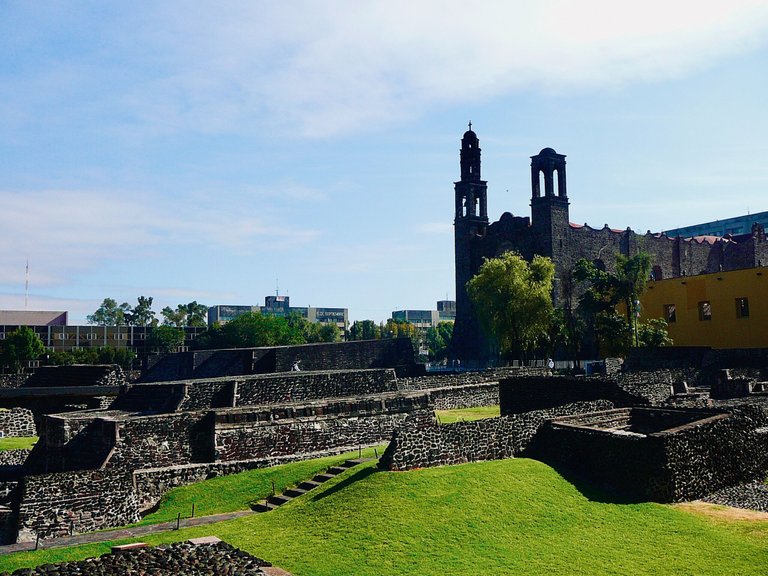
Tlatelolco is an archaeological excavation site in Mexico City, Mexico where remains of the pre-Columbian city-state of the same name have been found. It is centered on the Plaza de las Tres Culturas. On one side of the square is this excavated Tlatelolco site Source
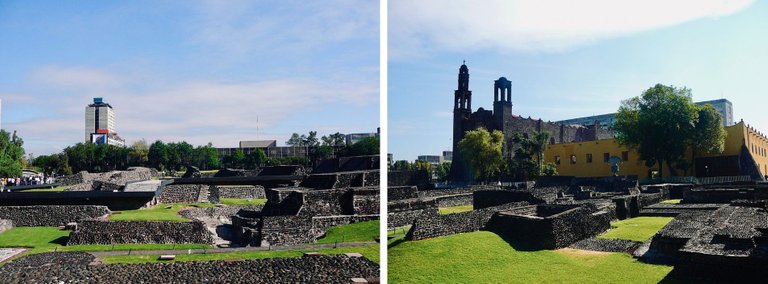
Santuario de Guadalupe
We then left the city behind, and the next stop was the Basilica of Our Lady of Guadalupe. We could have skipped this visit. And I could not find many photos of the temple. But it was impressive to see the thousands of people on pilgrimage, many of whom camp outside the church. And in December, millions of people come to the temple. This shrine is the most important Christian pilgrimage site in Mexico and perhaps the most important in Latin America.
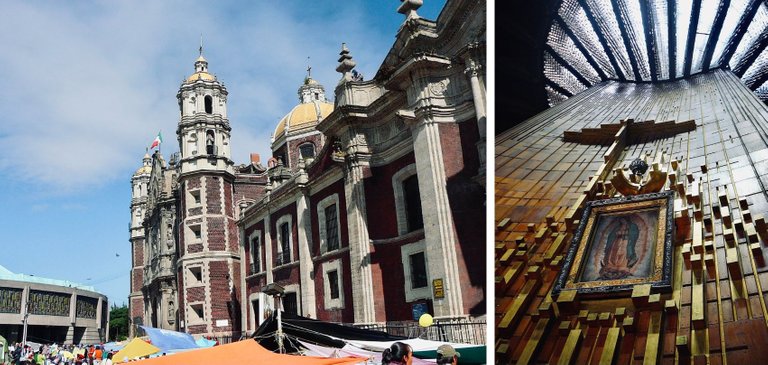
Teotihuacán
And a little after midday, finally, we arrived at Teotihuacán.
My son was very excited about the visit. At that time, he was 7 years old. Since we had booked the tour and had read some information, he kept asking when he would see the Pyramid of the Sun and the Pyramid of the Moon, so the excitement on arrival was big.
 View of the Pyramid of the Moon, Teotihuacán
View of the Pyramid of the Moon, Teotihuacán Teotihuacan is known today as the site of many of the most architecturally significant Mesoamerican pyramids built in the pre-Columbian Americas, namely Pyramid of the Sun and Pyramid of the Moon. At its zenith, perhaps in the first half of the first millennium (1 AD to 500 AD), Teotihuacan was the largest city in the Americas, with a population estimated at 125,000 or more, making it at least the sixth-largest city in the world during its epoch. Source
 Avenue of the Dead view from the Pyramid of the Moon / Pyramid of the Sun from Avenue of the Dead Teotihuacán
Avenue of the Dead view from the Pyramid of the Moon / Pyramid of the Sun from Avenue of the Dead Teotihuacán We walked along the Avenue of the Dead.
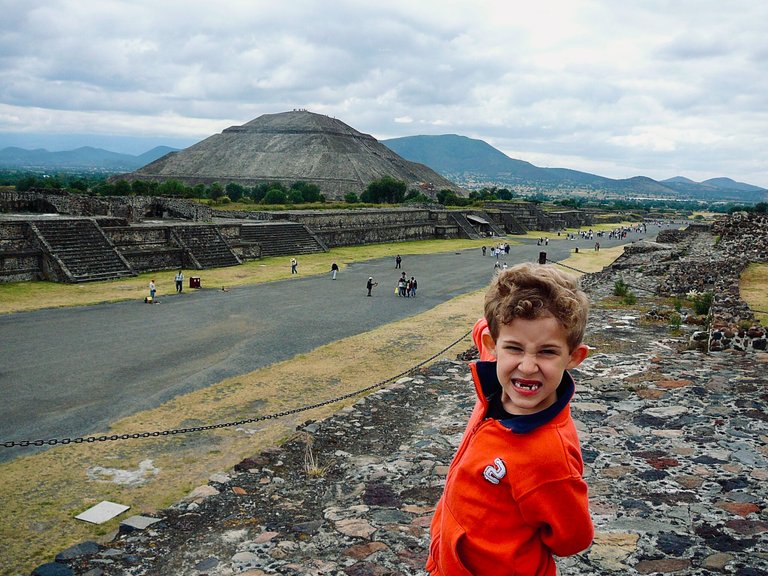
And we climbed the Pyramid of the Moon.
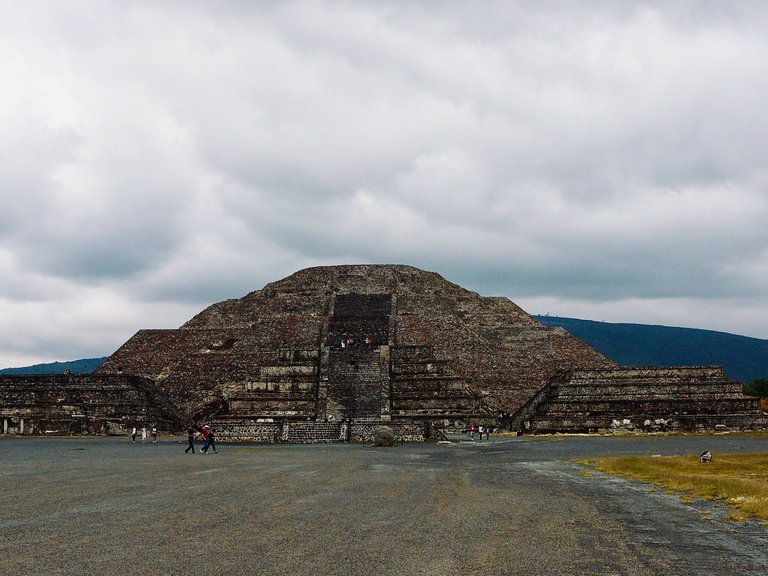
And to one of the lateral structures located in what constitutes the Plaza of the Moon.
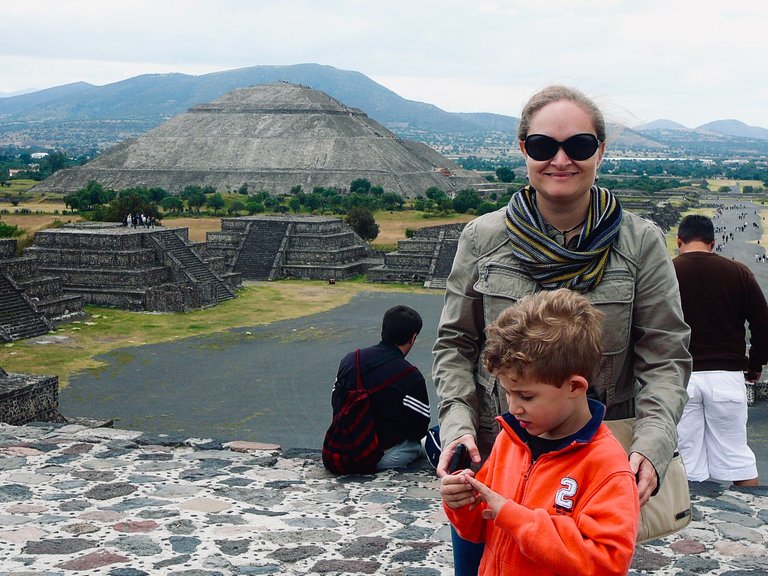
Being there, you can't help but imagine what life would have been like in that city. Who its inhabitants would have been, and why they abandoned the city. Questions that are still unanswered today.
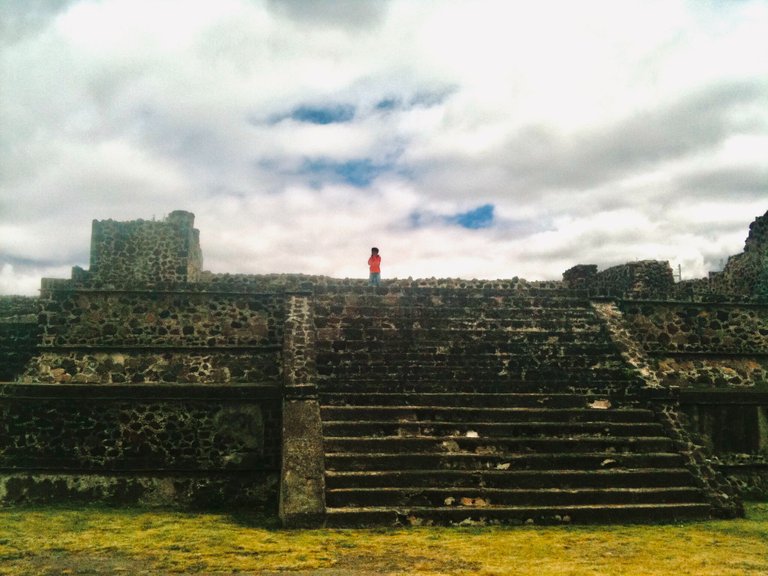
Teotihuacan means "birthplace of the gods". The name was given by the Mexicas, inhabitants of the Valley of Mexico and the Aztec empire. Source.
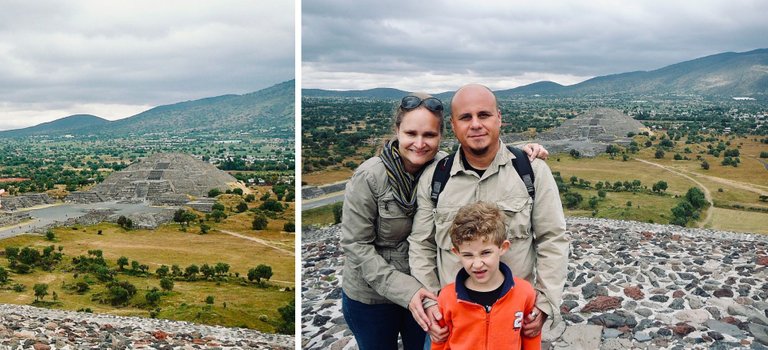
Our visit was short, and if I had the chance, I would go again to visit it at my leisure and without haste.
All the images were taken during our visit in October 2010.
Thank you for reading!







